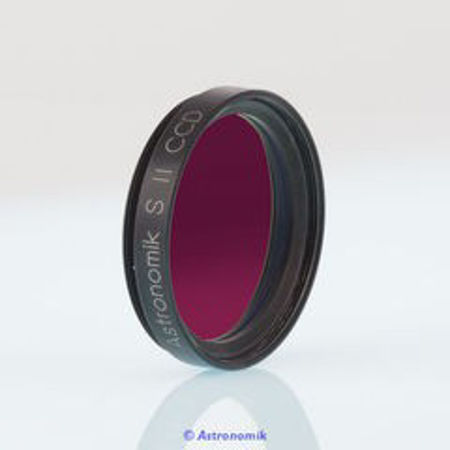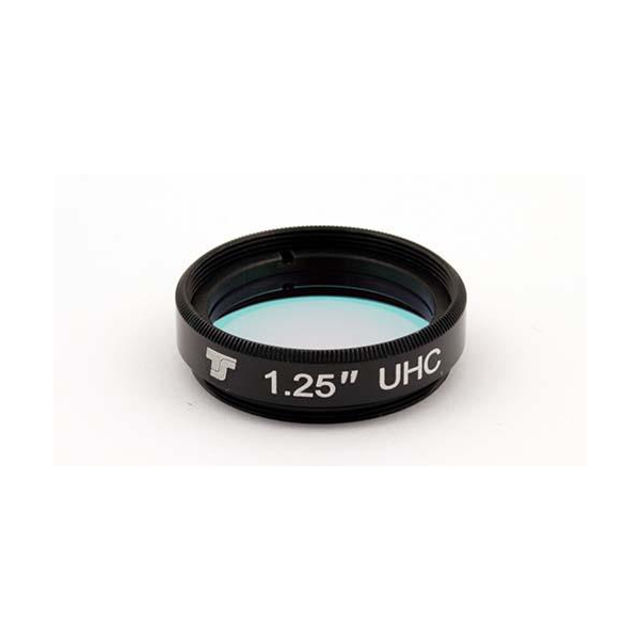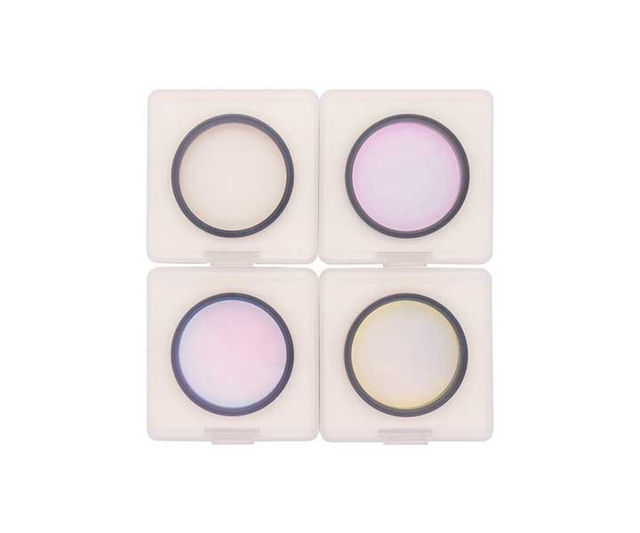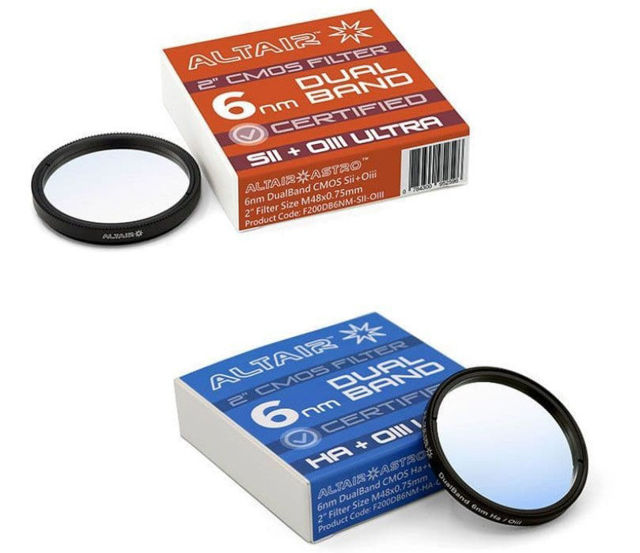CCD Filter for Astrophotography
- Home /
- Optical Accessories /
- CCD Filter for Astrophotography
Filters for Astrophotography

With modern interference filters, amateur astronomers can now achieve excellent image results. The applications include narrow-band emission line filters, broader-band color filters and filters for suppressing artificial light emission.
CCD Filter for Astrophotography
Blocks IR and UV light for improvement of contrast during imaging
67.00 €
Estimated delivery time : 1-4 days
Four 1.25" filters: luminance, red, green and blue for color images of celestial objects with monochrome CCD cameras
179.00 €
Estimated delivery time : 1-4 days
Four 2" filters: luminance, red, green and blue for color images of celestial objects with monochrome CCD cameras
299.00 €
Estimated delivery time : 1-4 days
Reduces light pollution and natural sky glow
65.00 €
Estimated delivery time : 1-4 days
Reduces light pollution and natural sky glow
89.00 €
Estimated delivery time : 1-4 days
The narrowband nebula filters from ZWO for astrophotography clearly increase the contrast of the object.
873.00 €
Estimated delivery time : 1-4 days
The narrowband nebula filters from ZWO for astrophotography clearly increase the contrast of the object.
659.00 €
Estimated delivery time : 1-4 days
The ZWO 2" L-RGB filter set is optimized for astro imaging with monochrome cameras
399.00 €
Estimated delivery time : 1-4 days
The ZWO 36 mm LRGB filter set is optimized for astro imaging. Also suitable for beginners.
259.00 €
Estimated delivery time : 1-4 days
This is the filter for imaging in moonlight or light pollution with a colour CMOS camera - or even in dark-sky conditions if you want total isolation and control over your channels, narrowband-style.
Altair DualBand 6nm ULTRA Filter Features:
- Capture two main emission nebulae bands at the same time, per filter, whilst suppressing light pollution, moonlight, and airglow.
- Acquire more data in less time, opening up your imaging window, even into the summer months when it isn't quite dark.
- If you have the 6nm Sii Oiii Ultra filter and the Ha Oiii filter combo, you can capture twice the Oiii data in each imaging session and combine them for true SHO Hubble style imaging with a colour camera!
- Extremely steep bandpass yields maximum contrast in extreme light pollution: 6nm FHWM centred on 500.7nm Oiii wavelength, 5.5nm FHWM centred on the Sii and Ha wavelengths.
- Can be used with One Shot Colour (OSC) CMOS or mono astronomical cameras for luminance data.
- Includes UVIR blocking for both modified and un-modified DSLR cameras, plus an anti-reflection coating for the ultimate in contrast.
- Best performance at focal ratios at F4.8 or slower, however can be used as fast as F3.6, with minimal contrast impact (conservative estimate - faster may be possible). Like any dichroic filter, contrast increases as focal ratio number increases. More info about light pollution filter performance and focal ratio here.
- Available in 1.25" or 2" standard astronomy filter sizes. The filters have standard Astronomy compatible filter threads, and fit inside the Altair Magnetic Filter holders (with appropriate slider), and standard astronomy filter wheels. Choose the 2" version for use with the Altair Canon / Nikon DSLR lens to astro CMOS adaptors. For Hypercam 183C and 533C or 533M, 585C and smaller sensors choose the 1.25" filter. For larger sensors choose the 2" version.
392.00 € 352.80 €
Estimated delivery time : 1-2 weeks
Altair DualBand 4nm Filter Features:
- Capture the two main emission nebulae bands at the same time, whilst suppressing light pollution, moonlight, and airglow.
- More data in less time, opening up your imaging window, even into the summer months when it isn't quite dark yet. Capture twice the Oiii data, whilst obtaining Sii to complement the Altair Ha Oiii DualBand filter.
- Extremely steep bandpass yields maximum contrast in extreme light pollution: 4nm FHWM centred precisely on the target wavelengths.
- Can be used with One Shot Colour (OSC) CMOS or mono astronomical cameras for luminance data.
- Includes UVIR blocking for both modified and un-modified DSLR cameras, plus an anti-reflection coating for halo suppression. To see the AR coating in action, please see images demonstrating the same filter with and without the AR coating on the bright star, Capella in exactly the same conditions with the same settings.
- Best performance at focal ratios as fast as F4.8, with contrast increasing as focal ratio increases. More info about light pollution filter performance and focal ratio here.
- The 2" filter has standard M48x0.75mm thread, and fits inside the Altair Magnetic Filter holders, standard 2" filter wheels, plus the Altair Canon / Nikon DSLR lens to astro CMOS adaptors.
1133.00 €
Estimated delivery time : 1-2 weeks
This is the filter for imaging in moonlight or light pollution with a colour CMOS camera - or even in dark-sky conditions if you want total isolation and control over your channels, narrowband-style.
Altair DualBand 6nm ULTRA Filter Features:
- Capture two main emission nebulae bands at the same time, per filter, whilst suppressing light pollution, moonlight, and airglow.
- Acquire more data in less time, opening up your imaging window, even into the summer months when it isn't quite dark.
- If you have the 6nm Sii Oiii Ultra filter and the Ha Oiii filter combo, you can capture twice the Oiii data in each imaging session and combine them for true SHO Hubble style imaging with a colour camera!
- Extremely steep bandpass yields maximum contrast in extreme light pollution: 6nm FHWM centred on 500.7nm Oiii wavelength, 5.5nm FHWM centred on the Sii and Ha wavelengths.
- Can be used with One Shot Colour (OSC) CMOS or mono astronomical cameras for luminance data.
- Includes UVIR blocking for both modified and un-modified DSLR cameras, plus an anti-reflection coating for the ultimate in contrast.
- Best performance at focal ratios at F4.8 or slower, however can be used as fast as F3.6, with minimal contrast impact (conservative estimate - faster may be possible). Like any dichroic filter, contrast increases as focal ratio number increases. More info about light pollution filter performance and focal ratio here.
- Available in 1.25" or 2" standard astronomy filter sizes. The filters have standard Astronomy compatible filter threads, and fit inside the Altair Magnetic Filter holders (with appropriate slider), and standard astronomy filter wheels. Choose the 2" version for use with the Altair Canon / Nikon DSLR lens to astro CMOS adaptors. For Hypercam 183C and 533C or 533M, 585C and smaller sensors choose the 1.25" filter. For larger sensors choose the 2" version.
619.00 € 599.00 €
Estimated delivery time : 1-2 weeks





















